Ducks are beautiful birds that belong in the same family as geese and swans. Like other birds, they come in both larger and smaller or miniature sizes. The miniature sized ducks are commonly known as bantam ducks.
Bantam ducks are much lighter than normal ones. Some of them live freely in the wild while the domesticated ones are raised as pets, or for exhibition.
If you are a fan of small ducks, here are 11 small duck breeds that you should definitely know:
Table of Contents
1. Black East Indian Duck
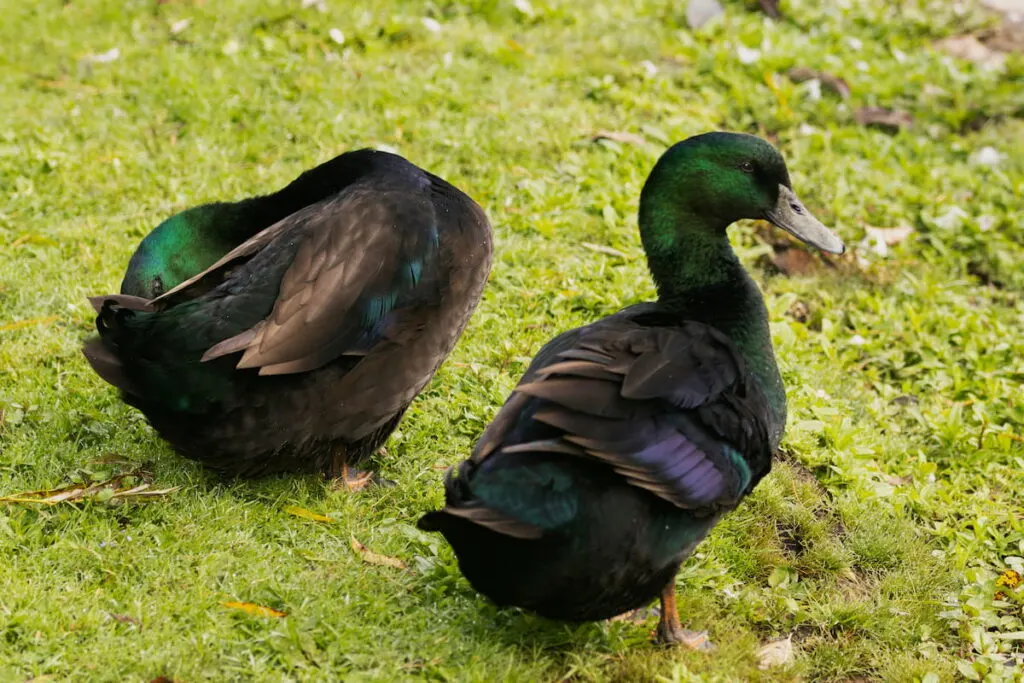
Also known as the East Indie duck, the Black East Indian duck is the oldest breed of the Bantam duck. Their exact origin is still unknown but some people speculate that they have been in the United States since the 19th century.
These small-sized ducks weigh less than 2.2 pounds. The drakes weigh around 1.9 pounds while the ducks weigh between 1.6 to 1.75 pounds.
The East Indies are distinguished by their iridescent blackish-green plumage and dark bills and legs. In some cases, the ducks also grow some white feathers as time passes.
Female East Indie lays between 40 to 100 eggs that are black or dark gray. These ducks are not a good breed for egg production so they are raised mainly as pets, or for exhibitions.
2. Call Duck
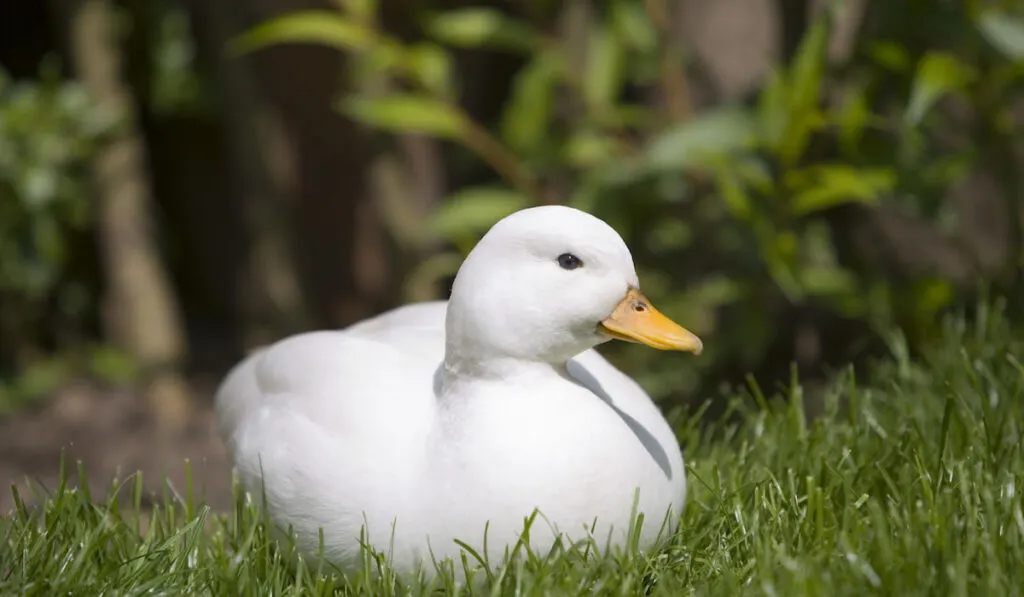
This cute little duck originated from the Netherlands where they are known as Coys or Decoy ducks.
Some people believe that their true origin is from the Asian continent. They are named call ducks because they were once used as decoys to lure the wild Mallard into traps in the marshes of Holland and in the fenlands of the United Kingdom.
The drakes weigh around 1.4 to 1.6 pounds while the ducks weigh between 1.1 to 1.25 pounds.
Call ducks have oval-shaped bodies, pale orange legs, bills, and large blue eyes. They come in varieties of color like white, buff, butterscotch, gray, pastel, chocolate, and blue fawn. Most people tend to raise this breed as pets or for ornamental purposes.
3. Miniature Crested Duck
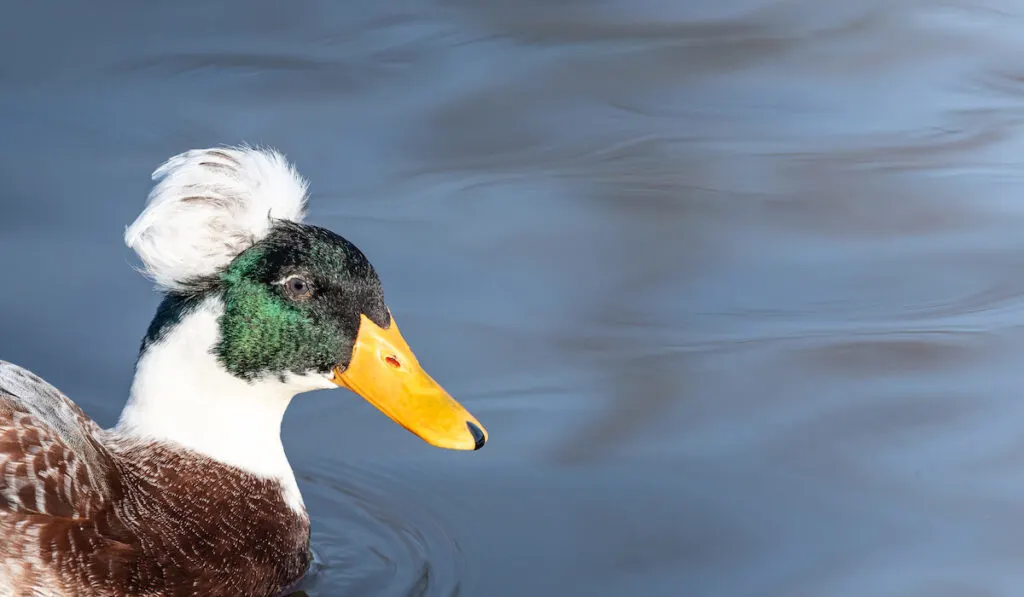
Miniature crested ducks are the smaller version of the Crested Duck and originated from the East of the Indian subcontinent before being developed in Holland. In the late 1980s, they were developed in Yorkshire by a man named Roy Sutcliffe, by crossbreeding Crested Ducks with Calls and Miniature Appleyards.
These ducks are well-known for their white bodies, yellow bills and legs, and large fluffy crests.
The drakes weigh around 2.4 pounds while the ducks weigh around 1.9 pounds. They are bred mainly for exhibitions.
The ducks of this breed lay between 60 to 150 eggs per year. It is advisable to keep a very low ratio of males to duck in every breeding pen because the drakes can damage the crest of the ducks when mating.
4. Carolina Wood Duck
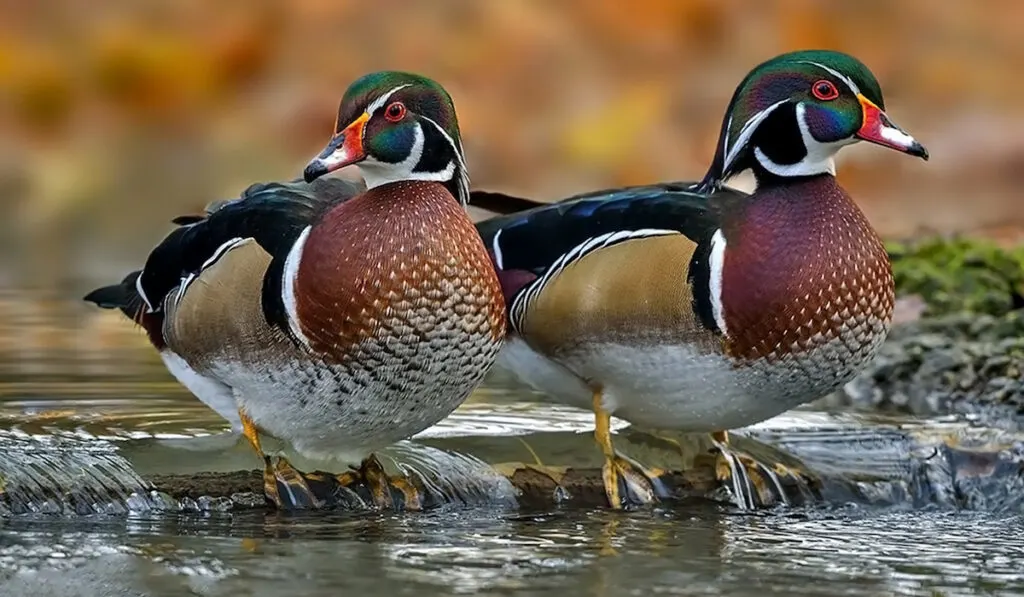
Carolina Wood ducks are also known as the Wood duck or Carolina duck. This small to medium-sized perching duck can be found on the Western coasts of North America, Mexico, and the Eastern states. They mostly inhabit wetland areas and wooded swamps.
Wood ducks can be distinguished by their ornate, colorful patterns; green crested heads, light brown wings, chestnut chests, and red rings around their eyes.
The females of this breed are different with gray-brown bodies and white rings around the eyes. These ducks measure around 19 inches in length, with an average wingspan of 29 inches, and weigh between 1 to 1.9 pounds.
Being omnivores, wood ducks feed on small live insects, seeds, and small fruits like berries. Female ducks typically lay between 9 to 14 eggs before incubating them for 28 to 37 days.
5. Khaki Campbell Duck
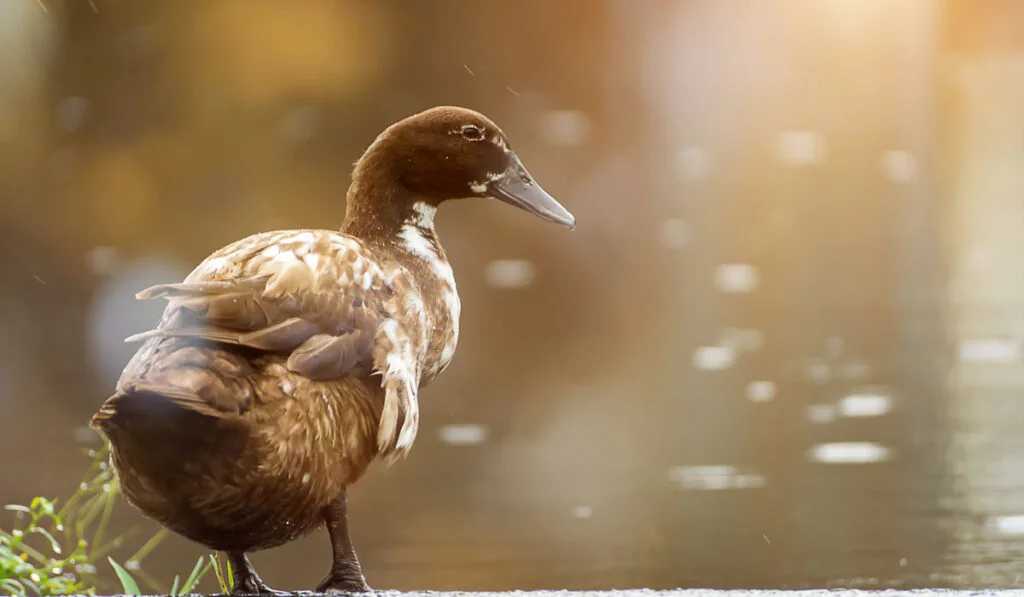
Khaki Campbell ducks were first developed in Gloucestershire, England, by a woman named Adele Campbell in the early 1900s. She crossbred her duck, a Penciled Runner with a Rouen Drake, which produced a Mallard and finally resulted in this breed.
Khaki Campbells are small-sized ducks with khaki brown, black, mudpies, or white bodies, dark bills and legs.
They weigh around 4 pounds and can grow up to 5 pounds when they mature. These ducks are a dual-purpose breed raised mainly for their meat and eggs. Female ducks lay between 280 to 300 white eggs per year.
Raising Khaki Campbells is fairly easy due to their friendly and docile temperament.
6. Silver Bantam Duck
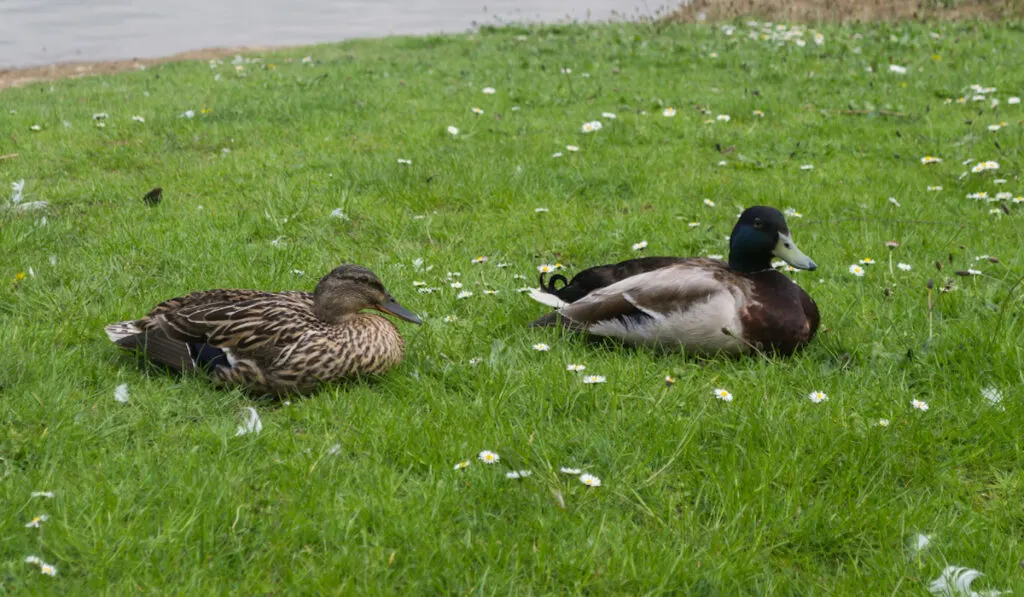
Silver Bantam ducks were developed in 1940 by crossing a White Call drake with a small Khaki Campbell.
Originally, they were called Miniature Appleyard but their colors don’t look the same as the Appleyard duck. To end this confusion, Tom Bartlett created a different Miniature Appleyard with the same colors as the large Appleyard and renamed the original breed ‘the Silver Bantam Duck’.
Some people believe that Silver Bantam belongs in the same family as Miniature Appleyard but they are two totally different breeds.
Silver Bantams can be recognized by their iridescent green head, light brown bodies, orange legs, and dark brown coloration on their chest and wings. Female Silver Bantams have buff-colored heads and lighter colors on their bodies.
These ducks weigh between 1.75 pounds to 2 pounds. They lay between 60 to 160 eggs per year and are mainly raised as pets, or for exhibition.
7. Welsh Harlequin Duck
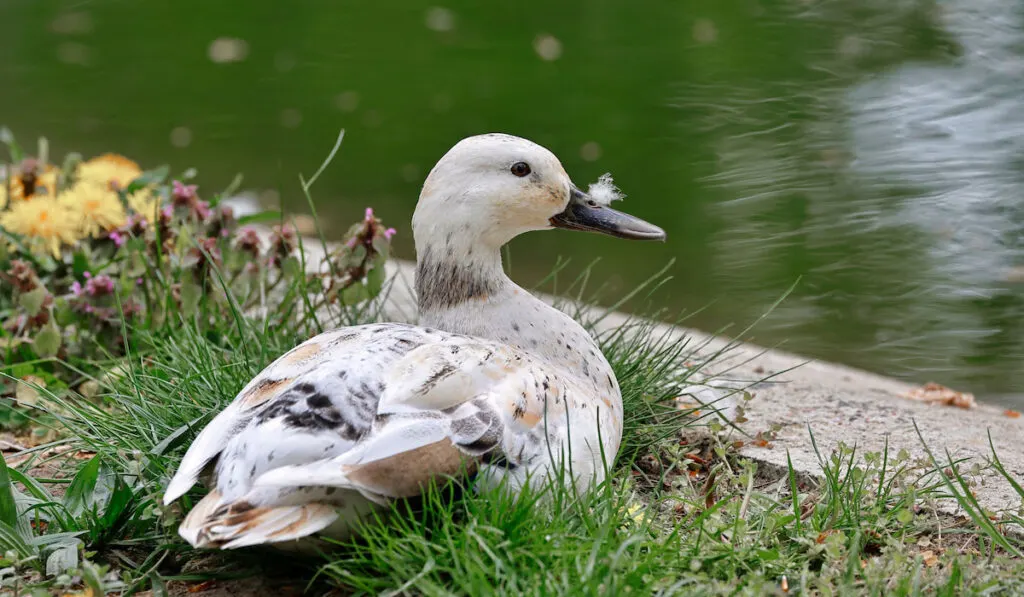
Welsh Harlequin ducks originated from Wales and were first developed by Leslie Bonnet in 1949. These lightweight domestic ducks were accepted by the American Poultry Association’s Standard of the Perfection in 2001.
Welsh Harlequins can be distinguished by their cream long bodies, black bills, and dark blue patches on the underside of their wings.
They weigh around 4.4 pounds and can reach up to 5.5 pounds when mature. These ducks lay around 250 eggs per year and are considered prolific egg producers. Welsh Harlequins are easy to raise due to their calm and docile temperament and are excellent foragers able to thrive with minimum supervision.
8. Mallard Duck
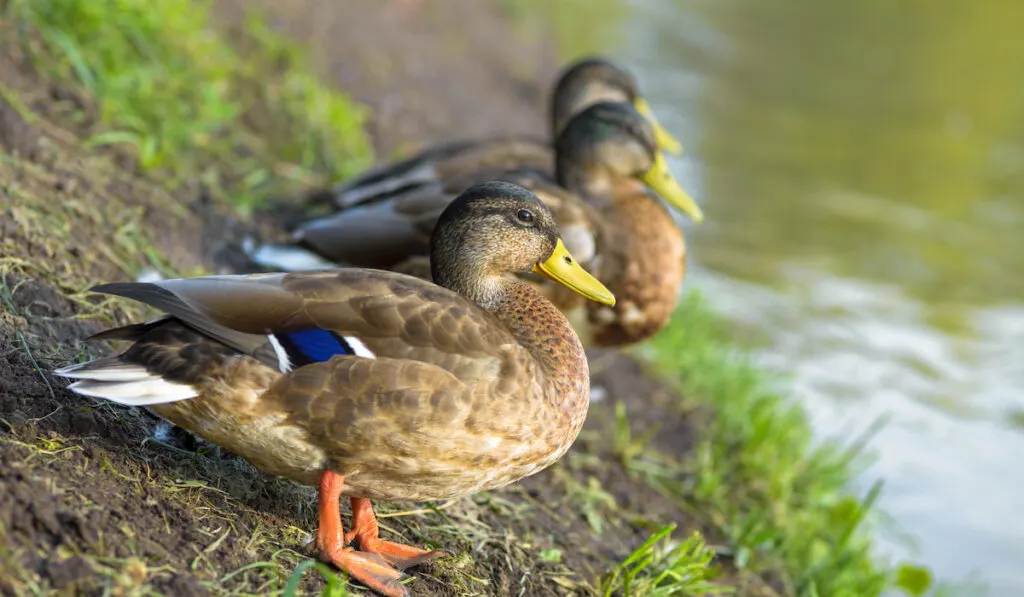
Mallard ducks are typically found in the wild of the Northern Hemisphere. They inhabit ponds, lakes, rivers, and any viable wetlands.
These wild ducks can be recognized by their iridescent green head, yellow bills, white ring around their neck, brown chest, white-cream bodies, and dark tails.
Female Mallards are slightly different with pale brown bodies and darker bills. Both sexes have blue patches on the underside of their wings. Mallards weigh around 1.6 to 3.5 pounds with an average wingspan of 32 to 39 inches.
Domestic Mallards are raised for their meat and eggs. In the wild, these ducks feed on aquatic insects and plants but they aren’t diving ducks.
9. Miniature Silver Appleyard Duck
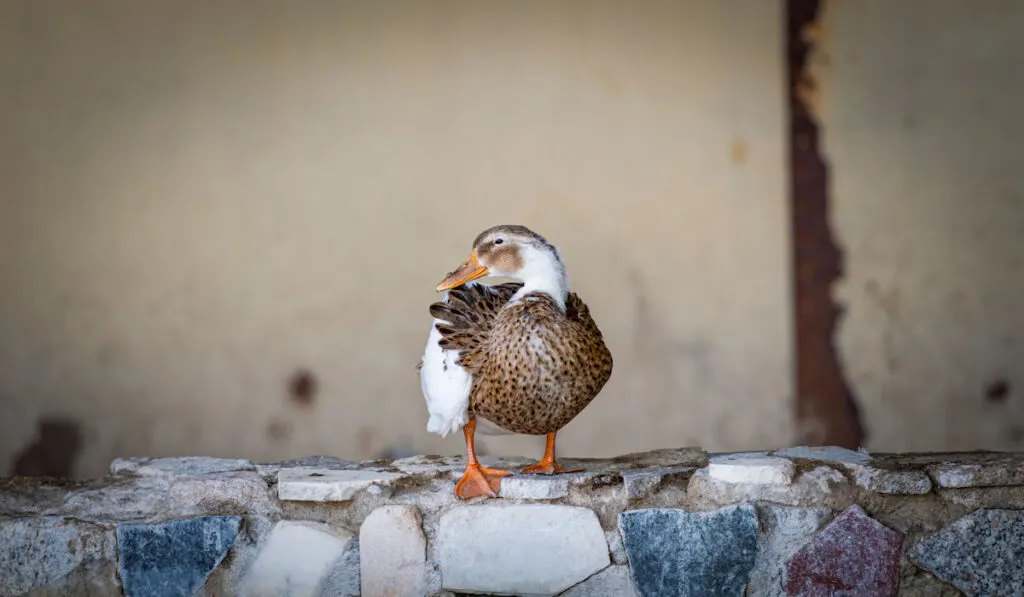
These hardy and colorful bantam ducks originated from Folly Farm in Gloucestershire. Their descendant, the Silver Appleyard was first developed by an Englishman named Reginald Appleyard in the 1940s before Tom Bartlett created a miniature version to separate them from the original breed in the 1980s.
Miniature Silver Appleyard ducks weigh between 2.3 and 2.6 pounds.
These ducks are great layers and can produce between 200 and 270 white eggs per year. Drakes can be characterized by their glossy green head, white ring around the neck, brown chestnut chest, and cream bodies while ducks possess paler cream bodies and brown stripes across the eyes.
Being good foragers, they are easy to raise and feed on snails, slugs, and young plants.
10. Magpie Duck
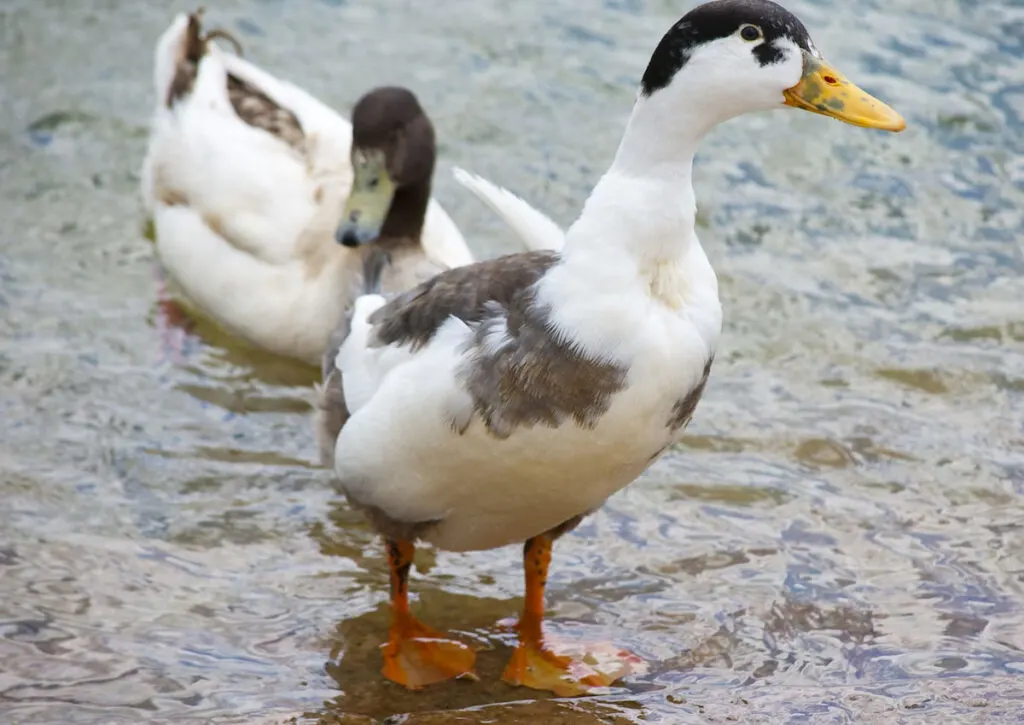
Magpie ducks were created in the early 20th century by Oliver Drake and M.C. Gower-Williams in Wales. They created this breed by crossing the Belgian Huttegem with the Runner duck.
After being imported to the United States in 1963, this breed didn’t become popular until 1984. They were standardized by the American Poultry Association’s Standard of Perfection in 1977.
Magpie ducks are a dual-purpose breed raised for their meat and eggs. These ducks can be recognized by their black caps, yellow bills, orange legs, and white bodies with dark gray or brown patches on their wings and back.
They weigh around 4.4 pounds and can grow up to 7 pounds when they mature. Magpie ducks are considered a multi-purpose breed raised for meat, eggs, and for exhibitions.
They lay between 220 to 290 large white eggs per year and are able to live up to 12 years.
11. Harlequin Duck
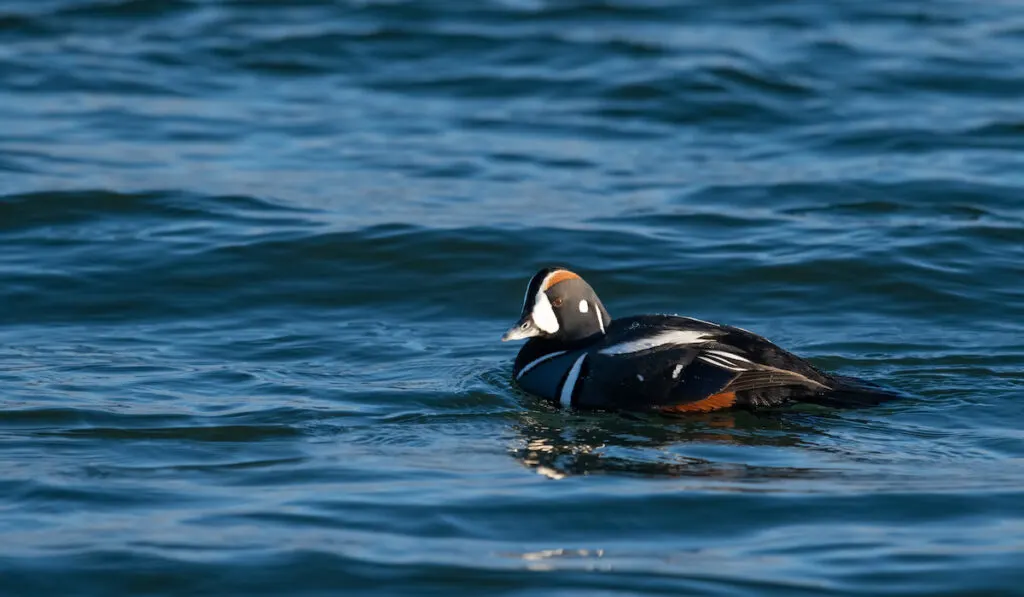
Harlequin ducks are small-sized sea ducks that can be found in west and eastern North America, eastern Asia, and Iceland. They live along fast-flowing streams, rocky coastal waters, and wetlands with vegetation and trees.
These ducks weigh around 0.9 to 1.5 pounds with a wingspan between 24 and 27.5 inches.
Harlequin ducks are slightly unique in color compared to other ducks. The male ducks possess different colorations like white stripes, maroon, and dark blue patches on their black bodies while females have grayish-brown plumage with small white patches on the face.
These ducks usually gather in small flocks and feed on crustaceans, aquatic insects, and small fish. Female ducks of this breed lay between 5 to 7 pale buff or cream eggs before incubating them for 27 to 30 days.
Final Thoughts
Just like other duck breeds, small ducks, especially domestic breeds are definitely a great choice for anyone who is interested in raising these birds in their farms or backyards.
They are beginner-friendly, cost-effective, and don’t require much space like other bigger ducks.
Citations
Black East Indian Duck
- https://poultrykeeper.com/duck-breeds/black-east-indian-ducks/
- https://www.roysfarm.com/east-indies-duck/
- http://domestic-waterfowl.co.uk/bei.html
Call Duck
- http://afs.okstate.edu/breeds/poultry/ducks/call/index.html/
- https://www.omlet.us/breeds/ducks/call_duck
- https://www.waterfowl.org.uk/domestic-waterfowl/call-ducks/
Miniature Crested Duck
- https://www.southwestfarmer.co.uk/news/16275855.crested-duck-smallholders-poultry-breed-month/
- https://poultrykeeper.com/duck-breeds/crested-miniature-ducks/
- https://www.omlet.co.uk/breeds/ducks/crested_miniature
Carolina Wood Duck
- https://winghamwildlifepark.co.uk/animal/carolina-wood-duck/
- https://www.beautyofbirds.com/woodducks.html
- https://ebird.org/species/wooduc
Khaki Campbell Duck
- https://backyardpoultry.iamcountryside.com/poultry-101/khaki-campbell-duck-breed-spotlight/
- https://www.roysfarm.com/raising-khaki-campbell-ducks/
- https://www.thehappychickencoop.com/khaki-campbell-duck-everything-you-need-to-know/
Silver Bantam Duck
- https://poultrykeeper.com/duck-breeds/silver-bantam-ducks/
- https://ashtonwaterfowl.net/bantam_ducks.htm
- https://www.raising-ducks.com/duck-breed-guide/silver-bantam-duck/
Welsh Harlequin Duck
- https://www.mcmurrayhatchery.com/welsh_harelquin_duck.html
- https://www.thehappychickencoop.com/welsh-harlequin-duck-everything-you-need-to-know/
- https://www.roysfarm.com/welsh-harlequin-duck/
Mallard Duck
- https://www.allaboutbirds.org/guide/Mallard/id
- https://www.thespruce.com/pictures-of-mallards-4121965
- https://kids.nationalgeographic.com/animals/birds/facts/mallard-duck
Miniature Silver Appleyard Duck
- https://www.omlet.co.uk/breeds/ducks/silver_appleyard_miniature
- https://www.waterfowl.org.uk/domestic-waterfowl/bantam-ducks/miniature-silver-appleyard/
- https://poultrykeeper.com/duck-breeds/silver-appleyard-miniature-ducks/
Magpie Duck
- https://www.roysfarm.com/magpie-duck/
- https://morningchores.com/magpie-ducks/
- https://www.thehappychickencoop.com/magpie-duck-breed-everything-you-need-to-know/
Harlequin Duck
